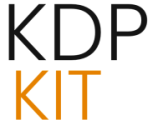The $1.8 Million Amazon KDP Secret: It Wasn’t Luck, It Was Operational Efficiency and Production Discipline

The figure—$1.8 million in royalties—often serves as a siren song in the self-publishing world, leading many to search for a single, hidden tactic, a magic keyword, or an algorithmic loophole. The reality, however, is far more rigorous and less glamorous. The genuine secret behind sustained, multi-million-dollar success on Amazon Kindle Direct Publishing (KDP) is not a stroke of luck, but the relentless application of operational efficiency and production discipline, coupled with sharp financial acumen. This discipline transforms publishing from a sporadic venture into a predictable, scalable enterprise.
Operational Efficiency and Production Discipline
The path to significant royalties—the kind that validate the initial title and build a legacy—is rarely about brilliance in a single area, but rather about sustained, efficient execution across every stage of the publishing lifecycle. The operator who manages to publish more high-quality, targeted titles in a year than their competitor achieves in three will naturally build a larger, compounding revenue base. This requires a mastery of personal workflow that mimics best-in-class manufacturing principles.
Mastering the Art of Task Batching and Flow State
Productivity killers in KDP are almost always rooted in “task jumping”—the corrosive act of opening a keyword research document, then switching to check an ad report, then attempting to draft an email newsletter, only to abandon all three tasks halfway through. This fragmented attention crushes deep work and high-level analytical thought, leading to superficial outputs across the board.
The disciplined approach involves batching similar tasks. Dedicate one specific, uninterrupted block of time exclusively to keyword and niche research across several potential titles. Dedicate another, separate block solely to cover design revisions or final formatting checks for a batch of already-written manuscripts. This compartmentalization allows the brain to enter a flow state for each specific domain, drastically improving both the speed and the quality of output for that specific function. In the increasingly competitive landscape of 2025, where content quantity is easily mimicked via AI, this qualitative focus achieved through flow is a defining advantage.
Establishing a Scalable Content Pipeline
The high-earning publisher treats their publishing schedule like a finely tuned manufacturing line. They establish a clear, sequential pipeline where one book moves from stage to stage, never waiting idle. The publisher must maintain multiple titles occupying different stages simultaneously to ensure a consistent, predictable flow of new, revenue-generating assets entering the market every month. This creates a compounding effect on overall royalties rather than relying on one-off successes.
A modern KDP pipeline, reflecting post-2024 advancements, might look like this:
By keeping titles moving through this system, the publisher guarantees market presence and mitigates the risk of long gaps between revenue injections.
Financial Acumen: Analyzing Royalty Streams and Investment
The title mentioning multi-million-dollar figures implies more than just a large gross revenue; it demands a granular understanding of true profitability. This goes beyond merely looking at top-line sales figures and requires a sophisticated approach to cost management and capital deployment.
Deconstructing Profit Per Unit Versus Volume Targets
A common beginner error is equating a high selling price with high profitability. If a book sells for ten dollars but costs five dollars to produce and requires twenty dollars in advertising to acquire that single sale, the net profit is negative. The sophisticated operator calculates the true Customer Acquisition Cost (CAC) against the projected Lifetime Value (LTV) of a customer within a specific niche.
The secret lies in optimizing for a high, consistent profit-per-unit. This is achieved by managing production costs efficiently and ensuring that advertising Return on Investment (ROI) is positive. As of 2025, the industry benchmark often points toward a Customer Lifetime Value (CLV) to CAC ratio of 3:1 for sustainable scaling. Furthermore, with Amazon Ads becoming increasingly expensive, over-relying on paid acquisition is a common path to unprofitability; an ACoS over 20% is frequently cited as the break-even point or worse for many titles. Therefore, optimizing for books that can secure organic sales and maintain a decent royalty, minimizing ad dependency, is the modern bedrock of profit. A smaller volume of highly profitable books consistently outweighs a massive volume of barely profitable ones.
Strategic Allocation of Capital for Growth Initiatives
Capital in this business must be viewed as fuel for scaling proven methods, not as a cushion against failure. Once a specific niche, cover style, or advertising angle demonstrates a definitive positive return on investment (ROI), the next step is not to seek a new, unverified “secret,” but to strategically reinvest profits back into that winning formula.
This reinvestment manifests in two critical ways:
The money is not meant to sit as static profit; it is the deliberate lever used to amplify established success into a larger, more dominant market position.
The Long Game: Perseverance and Iterative Refinement
The final element that separates the sustained millionaire from the one-hit-wonder is the approach to failure and data feedback. The realization that the first dozen attempts might be subpar, or even outright failures, is a necessary prerequisite for achieving mastery in this environment.
Analyzing Performance Metrics for Continuous Improvement
Every published title, regardless of its immediate financial success, serves as a high-value data point in the performance-based ecosystem of 2025. The key is to move beyond simply checking gross sales figures; the imperative is to systematically analyze why a book sold or, more importantly, why it did not.
This involves deep, quantitative dives into:
This continuous, objective data analysis replaces emotional reaction with rational adjustment, ensuring that every subsequent publication is built upon the hard-won lessons of the previous ones.
Cultivating Resilience Against Platform Volatility
The KDP environment is inherently susceptible to shifts—algorithmic updates, content guideline enforcement, new competitive entrants, or even macro-economic events can cause sudden, sharp drops in visibility or sales. The resilient publisher does not panic or assume the “system is broken”. Instead, they view these fluctuations as market noise against which their diversified portfolio and systematic processes act as a stabilizing force.
The $1.8 million success story is not the tale of someone who avoided problems, but of someone who developed the operational fortitude and strategic depth to weather the inevitable storms. They understand that the core, non-secret principles—efficient production, stringent financial modeling, and iterative data analysis—are the only elements truly within their control, underpinning lasting digital commerce success in the modern era.








